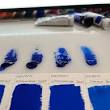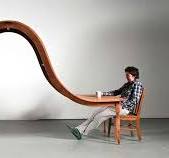The Beauty of Gouache Paint
Gouache paint, pronounced “gwash,” is a versatile and unique medium that has been used by artists for centuries. Known for its vibrant colors and matte finish, gouache offers a wide range of possibilities for creating stunning artworks.
What is Gouache Paint?
Gouache is a type of water-based paint that consists of pigment, water, and a binding agent, usually gum arabic. It is similar to watercolor but has a higher pigment concentration, giving it a more opaque and vibrant appearance. Gouache can be diluted with water to create transparent washes or applied thickly for bold, opaque layers.
Benefits of Using Gouache
One of the main advantages of gouache paint is its versatility. Artists can use it in various techniques, such as layering, blending, and detailing. Its quick drying time allows for easy corrections and adjustments during the painting process. Additionally, gouache can be reactivated with water even after it has dried on the palette or paper.
Creating Art with Gouache
Artists often choose gouache for its ability to create rich and vivid colors. The matte finish of gouache gives artworks a unique aesthetic appeal that differs from the glossy finish of acrylic or oil paints. Whether used for illustrations, fine art paintings, or graphic design projects, gouache offers endless possibilities for creative expression.
Exploring Gouache Techniques
There are various techniques artists can explore when working with gouache paint. From wet-on-wet blending to dry brush strokes, each technique offers a different effect and texture to the artwork. Experimenting with layering and mixing colors can result in dynamic compositions full of depth and vibrancy.
Conclusion
Gouache paint continues to captivate artists with its beauty and versatility. Whether you are a beginner looking to explore new mediums or an experienced artist seeking fresh inspiration, gouache offers a world of creative possibilities waiting to be explored.
Mastering Gouache: 9 Essential Tips for Stunning Paintings
- Use high-quality gouache paint for better results.
- Start with a limited color palette to learn how to mix colors effectively.
- Experiment with different brush techniques to create various textures.
- Layering is key in gouache painting – allow each layer to dry before adding another one.
- Use water sparingly to control the opacity and consistency of the paint.
- Try painting on different surfaces like watercolor paper, illustration board, or toned paper.
- Practice creating gradients and smooth transitions between colors for a more polished look.
- Don’t be afraid to make mistakes – gouache is forgiving and allows for corrections even after drying.
- Protect your finished gouache paintings with a fixative spray or by framing them under glass.
Use high-quality gouache paint for better results.
When working with gouache paint, it is essential to use high-quality materials to achieve the best results in your artwork. High-quality gouache paint offers superior pigment concentration, smooth consistency, and vibrant colors that can elevate your painting techniques. Investing in premium gouache paint ensures better color intensity, opacity, and overall performance, allowing you to create stunning artworks with rich textures and depth. By using high-quality gouache paint, artists can enhance their creative process and produce professional-looking pieces that showcase the true beauty of this versatile medium.
Start with a limited color palette to learn how to mix colors effectively.
Starting with a limited color palette is a valuable tip when working with gouache paint. By restricting the number of colors you use, you can focus on learning how to mix them effectively to create a wide range of hues and tones. This approach not only helps you understand color theory better but also encourages experimentation and creativity in your artwork. Mastering color mixing with a limited palette can lead to more harmonious and cohesive paintings, allowing you to achieve the desired visual impact in your artwork.
Experiment with different brush techniques to create various textures.
To enhance your gouache painting skills, try experimenting with a variety of brush techniques to achieve diverse textures in your artwork. By exploring different brushstrokes, such as stippling, dry brushing, or cross-hatching, you can add depth and visual interest to your paintings. These techniques allow you to create a range of textures, from smooth and blended surfaces to rough and textured areas, adding dimension and character to your compositions. Embrace the versatility of gouache paint by incorporating various brush techniques into your creative process to bring your artistic vision to life with unique textures and visual effects.
Layering is key in gouache painting – allow each layer to dry before adding another one.
In gouache painting, mastering the technique of layering is essential for achieving depth and richness in your artwork. To make the most of this versatile medium, it is crucial to allow each layer to fully dry before applying the next one. By patiently building up layers of color and allowing them to dry, artists can create intricate details, subtle transitions, and vibrant hues that enhance the overall visual impact of their paintings. Patience and precision in layering are key elements in harnessing the full potential of gouache paint and unlocking its expressive possibilities.
Use water sparingly to control the opacity and consistency of the paint.
When working with gouache paint, it is essential to use water sparingly to control the opacity and consistency of the paint. By adding water gradually, artists can adjust the intensity of colors and achieve the desired level of transparency or opaqueness in their artwork. This careful balance allows for greater control over the painting process, enabling artists to create dynamic compositions with varying levels of depth and richness.
Try painting on different surfaces like watercolor paper, illustration board, or toned paper.
To enhance your experience with gouache paint, consider experimenting with painting on various surfaces such as watercolor paper, illustration board, or toned paper. Each surface offers unique characteristics that can influence the texture, color intensity, and overall look of your artwork. Watercolor paper provides a traditional surface for gouache painting, allowing for smooth blending and layering of colors. Illustration board offers a sturdy surface that can withstand multiple layers of paint and detailed work. Toned paper adds a subtle tint to your artwork, creating a different visual effect compared to painting on white surfaces. By trying different surfaces, you can discover new possibilities and enhance the versatility of your gouache paintings.
Practice creating gradients and smooth transitions between colors for a more polished look.
To enhance the quality of your gouache paintings, it is advisable to practice creating gradients and smooth transitions between colors. By mastering this technique, you can achieve a more polished and professional appearance in your artwork. Seamless blending of colors not only adds depth and dimension to your compositions but also elevates the overall visual impact of your paintings. Experimenting with gradients and transitions in gouache painting allows you to refine your skills and create captivating pieces that showcase your artistic proficiency.
Don’t be afraid to make mistakes – gouache is forgiving and allows for corrections even after drying.
When working with gouache paint, it’s important not to be afraid to make mistakes. Gouache is a forgiving medium that allows for corrections even after drying. This unique characteristic gives artists the freedom to experiment, make adjustments, and refine their artwork without fear of irreversibly damaging the piece. Embracing the versatility of gouache encourages creativity and enables artists to explore new techniques with confidence, knowing that they can easily rectify any errors along the way.
Protect your finished gouache paintings with a fixative spray or by framing them under glass.
To preserve the beauty and longevity of your finished gouache paintings, it is recommended to protect them using a fixative spray or by framing them under glass. A fixative spray helps seal the surface of the painting, preventing smudging and ensuring the colors remain vibrant over time. Framing your gouache artwork under glass provides an extra layer of protection against dust, moisture, and physical damage, while also enhancing its presentation. By taking these simple steps to safeguard your creations, you can enjoy your gouache paintings for years to come.


